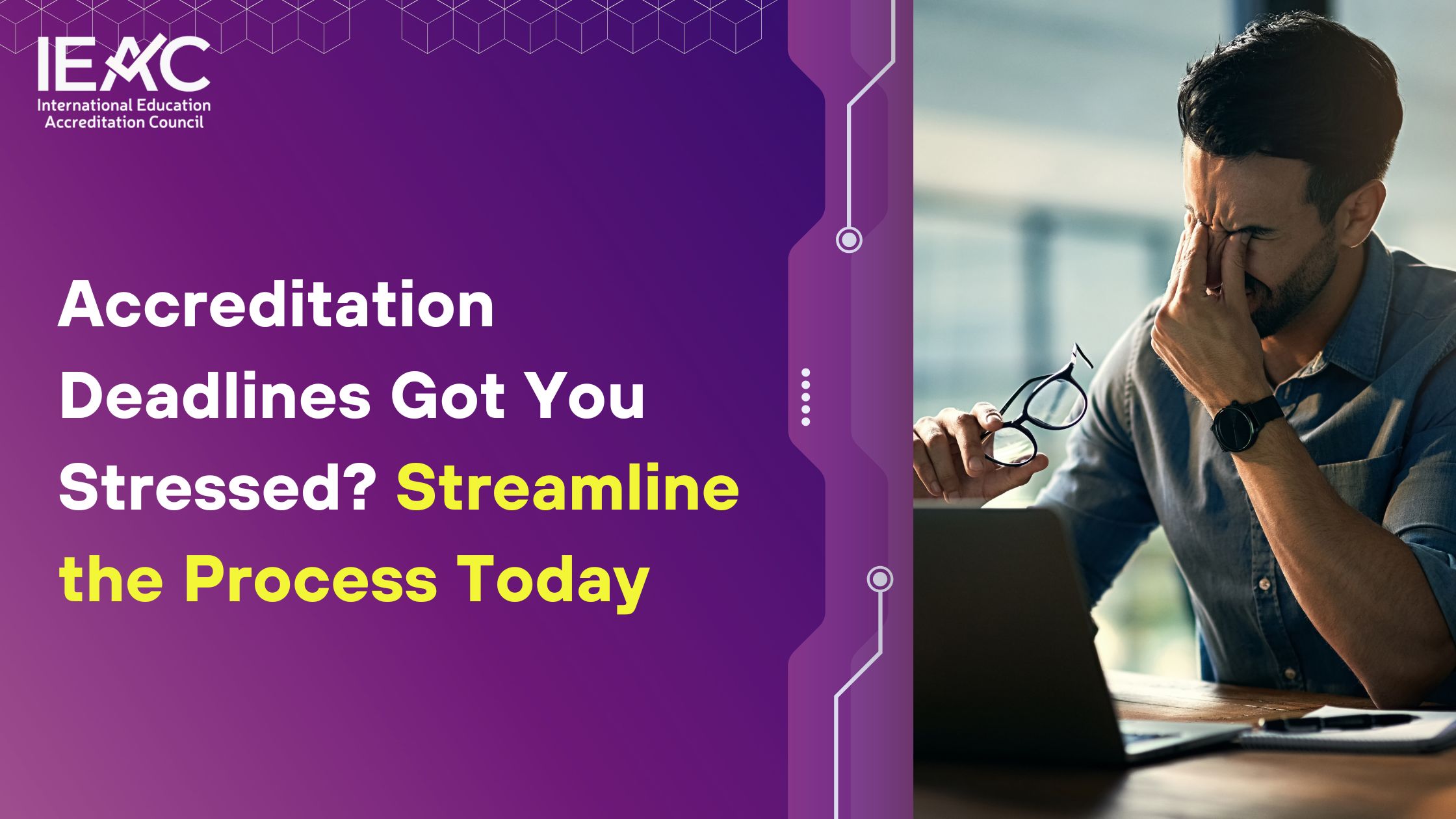- Home
- About IEAC
- Accreditation
- University Accreditation
- College Accreditation
- Online Institution Accreditation
- School Accreditation
- University Recruitment Agency Accreditation
- Programmatic Accreditation
- Teacher/ Lecturer Accreditation
- Religious Institutes Accreditation
- Affiliate Accreditation
- Research Accreditation Candidacy Accreditation
- IEAC Membership
- Institutions Accredited
- Accreditation Process
- Contact Us Webinar Apply Now
Blog
Is Online Education Truly Safe? Digital Safety as a Cornerstone of Quality Assurance
Lorem ipsum dolor sit amet, consectetur adipiscing elit, sed do eiusmod tempor incididunt ut labore et dolore magna aliqua. Quis ipsum suspendisse ultrices gravida. Risus commodo viverra maecenas accumsan lacus vel facilisis.

Is Online Education Truly Safe? Digital Safety as a Cornerstone of Quality Assurance
Online learning may be here to stay — but is it truly safe?
This question, once confined to IT departments, now touches every layer of higher education: from course design to accreditation audits. As institutions scale up virtual programs, digital safety has evolved into a pillar of academic quality, not just a technical requirement. Ensuring students are protected—emotionally, ethically, and digitally—is now a critical benchmark for responsible, future-ready education.
Is Online Education Truly Safe?
In today’s rapidly digitizing higher education landscape, asking “Is online education truly safe?” is not a rhetorical gesture—it is a critical challenge to institutional quality and ethics. As more universities adopt fully online or hybrid learning models, digital safety has become central to how we define a high-quality educational experience. It is no longer a peripheral concern delegated to IT departments but a core indicator of educational integrity, inclusion, and accountability.
Online Learning Comes with Real, Often Unseen Risks
The efficiency and flexibility of online learning environments often obscure a multilayered set of threats. Students encounter a range of digital vulnerabilities: from cyberbullying and social exclusion to data breaches and emotional distress resulting from overexposure to digital stimuli. These risks are not speculative.
The UNESCO Safe to Learn Strategy (2021–2024) underscores that digital forms of violence—especially against already marginalized students—directly erode engagement, attendance, and learning outcomes.
Institutions that overlook these risks compromise educational equity and fuel mistrust among students and families. Digital safety must therefore be viewed as a structural obligation—not merely a protective measure but a precondition for pedagogical success.
Safety Policies Must Be Lived, Not Just Written
Global quality assurance agencies such as ENQA and CHEA now call for digital safety to be explicitly embedded within institutional governance and policy. However, in practice, many universities treat digital safety as a compliance task—issuing guidelines without building corresponding cultural habits.
Guides such as Jisc’s “Staying Safe Online” provide actionable insights:
- Embedding safety protocols in course and platform design
- Moderating online learning spaces with care
- Training academic and support staff in recognizing signs of digital distress
- Ensuring responsive, confidential, and transparent reporting channels
These are not technicalities—they are reflections of institutional values and the ethical duty of care owed to learners and faculty alike.
Psychological and Emotional Safety Must Guide Digital Design
The psychological dimensions of digital education are often underestimated. Students are not only navigating course content—they are also coping with social isolation, performance anxiety, and algorithm-driven engagement pressure. The UNESCO IITE Guidance for Online Learning emphasizes the need for human-centered design, urging institutions to prioritize mental well-being alongside academic goals.
Well-designed online learning environments should:
- Provide cognitive relief through structured, non-overwhelming pacing
- Promote inclusive dialogue that avoids social silencing or bias
- Ensure interfaces are accessible, intuitive, and emotionally safe
At institutions like Vertex, these principles are not aspirational—they are operational. Vertex embeds well-being modules into its virtual classroom, trains faculty in trauma-informed teaching practices, and designs its platforms to support both focus and emotional regulation.
Students Need to Feel Safe to Learn and Participate
For students, feeling safe is not a luxury—it is foundational to their willingness to engage, question, and grow. Emotional security in digital spaces allows students to express themselves without fear of judgment, exclusion, or reprisal. In environments where psychological safety is present, learners are more likely to persist through challenges, collaborate effectively, and pursue deeper learning.
Conversely, when students encounter hostility, microaggressions, or surveillance anxiety, their academic performance often suffers. A trust-based learning environment—one that respects privacy, encourages feedback, and values the learner's dignity—translates directly into higher retention, satisfaction, and achievement.
Faculty Also Deserve Safe, Respectful Online Workspaces
The safety discourse must also extend to faculty. Professors and instructors increasingly face digital harassment, unauthorized recordings, and blurred work-life boundaries due to constant digital availability. Without proper safeguards, academic freedom and instructional quality are at risk.
Institutions committed to digital safety must protect educators through clear anti-harassment policies, robust moderation of online interactions, and mental health support tailored to faculty needs. Respecting the boundaries, labor, and psychological well-being of academic staff is integral to creating a sustainable and ethical online teaching ecosystem.
Safety Is Now a Quality Indicator, Not an Accessory
Traditionally, accreditation agencies focused on curriculum standards and assessment methods. Today, however, the safety of the learner experience itself is a legitimate and measurable component of educational quality. The Digital 2030 Wales framework from Jisc explicitly integrates digital well-being into its long-term benchmarks for academic excellence.
This evolution invites quality assurance bodies to ask:
- Are learners equipped to set digital boundaries and seek help when needed?
- How are incidents of online harm tracked, investigated, and resolved?
- Does the learning environment support emotional resilience, not just cognitive load?
These are no longer peripheral questions. They sit at the heart of how education is delivered, assessed, and improved in digital contexts.
Accreditation Must Be Rooted in Trust, Not Checklists
Institutions can no longer rely solely on compliance to signal quality. In an era where students can choose among global providers, trust becomes the decisive differentiator. Accrediting bodies such as IEAC are shifting toward holistic evaluations that prioritize transparency, learner safety, and institutional ethics.
Vertex University, for instance, has adopted a proactive “safety-by-design” approach, integrating digital protection measures and well-being practices from enrollment through to graduation. This anticipatory model not only meets current accreditation standards but helps shape the next generation of them.
Digital Safety Defines the Future of Higher Education
The shift to online education has done more than change where learning happens—it has redefined what quality means. Institutions must now demonstrate not only pedagogical rigor, but also ethical responsibility toward the digital well-being of their communities.



.jpg)


